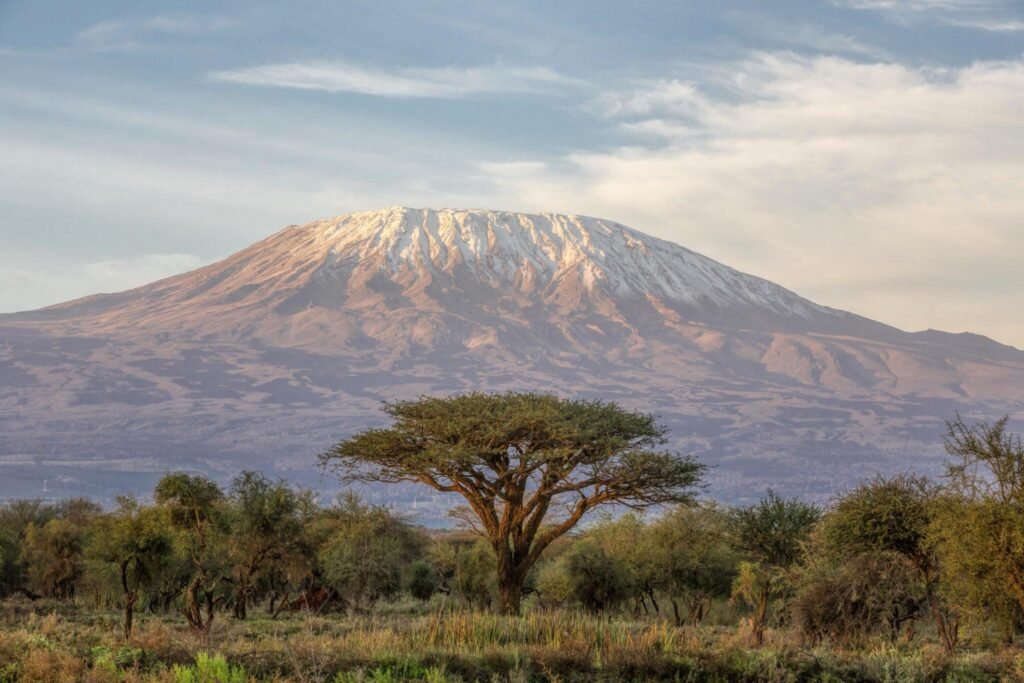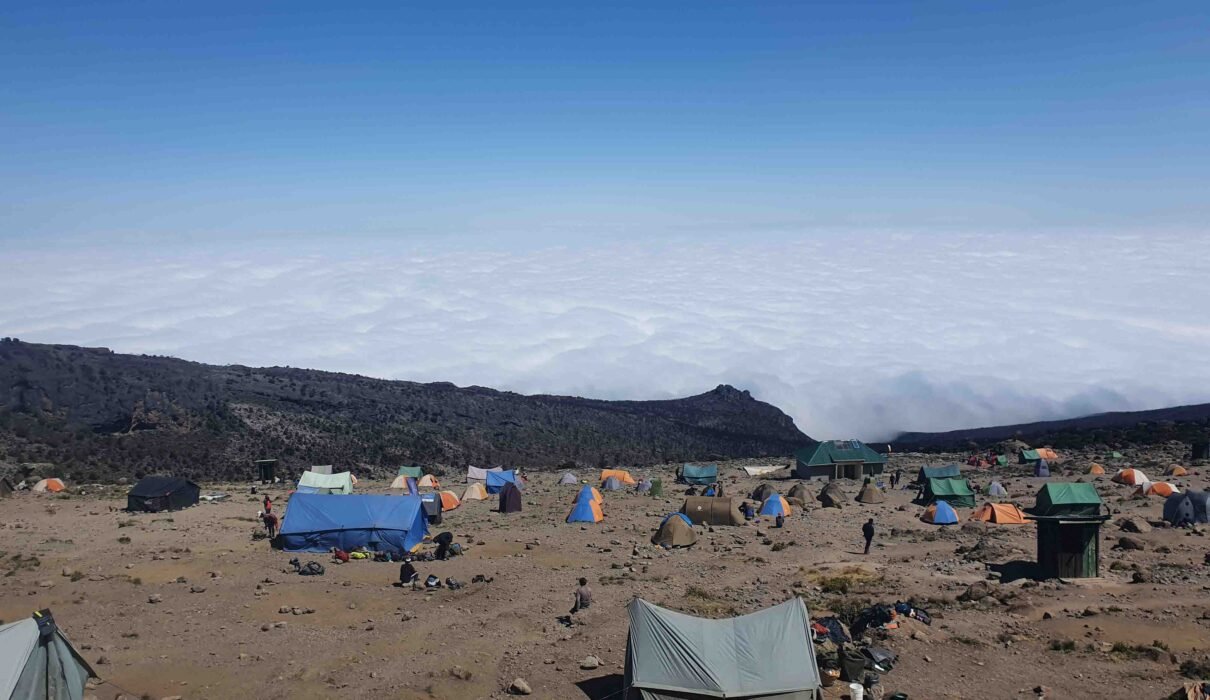The Best Acclimatization for Climbing Kilimanjaro. Climbing Mount Kilimanjaro is a once-in-a-lifetime adventure, but it comes with its challenges—chief among them being altitude sickness. Proper acclimatization is the key to ensuring a safe and successful ascent to the summit. Understanding how to allow your body to adjust to the high altitudes will not only make the climb safer but also increase your chances of reaching the top of Africa’s tallest mountain.
In this guide, we’ll cover the best acclimatization tips, why it’s crucial, and how to plan your Kilimanjaro trek to reduce the risk of altitude sickness.
Start planning your Kilimanjaro climb with the experts.

The Best Acclimatization for Climbing Kilimanjaro : Why Acclimatization Is Crucial for Kilimanjaro Climbers
Kilimanjaro’s summit stands at a towering 5,895 meters (19,341 feet), where oxygen levels are about half of what they are at sea level. This can cause acute mountain sickness (AMS) if your body doesn’t have time to adjust to the lower oxygen levels. Proper acclimatization helps your body gradually adapt, reducing the risk of severe symptoms such as headaches, dizziness, nausea, and in extreme cases, life-threatening conditions like pulmonary edema.
- Key Principle: “Climb high, sleep low” to give your body time to adjust.
- Risks of Poor Acclimatization: AMS can force you to descend early, cutting your climb short.
Learn more about altitude sickness and its effects here.
The Best Acclimatization for Climbing Kilimanjaro : The Best Routes for Acclimatization on Kilimanjaro
Choosing the right route is one of the most important factors for acclimatization. The longer the route, the more time your body has to adjust to the altitude. Popular routes like Lemosho and Machame are ideal for gradual acclimatization because they offer more days on the mountain compared to shorter routes like Marangu.
Lemosho Route
- Duration: 7-8 days.
- Advantages: Longer time on the mountain, gradual altitude gain, high success rate.
Machame Route
- Duration: 6-7 days.
- Advantages: “Climb high, sleep low” profile, stunning scenic views, higher success rate than Marangu.
Find out which Kilimanjaro route is best for you here.
The Best Acclimatization for Climbing Kilimanjaro : Best Practices for Acclimatization During Your Climb
The process of acclimatization starts long before reaching the summit. Here are some of the most effective ways to acclimatize during your Kilimanjaro climb:
- Climb Slowly: Rushing up the mountain increases the risk of altitude sickness. A slow, steady pace is essential.
- Stay Hydrated: Drink at least 3-4 liters of water each day to prevent dehydration, which can worsen altitude sickness.
- Eat Well: High-energy foods help your body cope with the increased physical demands at high altitudes.
- Take Rest Days: Some routes offer extra acclimatization days, which greatly reduce the risk of AMS.
Discover essential tips for staying healthy on Kilimanjaro.
The Best Acclimatization for Climbing Kilimanjaro : “Climb High, Sleep Low”: A Proven Acclimatization Strategy
One of the best-known acclimatization techniques is the “climb high, sleep low” method. This involves ascending to a higher altitude during the day and descending to a lower altitude to sleep. This technique allows your body to adapt to higher elevations more gradually, helping you avoid altitude sickness.
- Example: On the Machame or Lemosho routes, you might hike up to Lava Tower (4,600 meters) during the day and then descend to Barranco Camp (3,950 meters) to sleep.
Learn more about how to follow the “climb high, sleep low” approach.
The Best Acclimatization for Climbing Kilimanjaro : Understanding Altitude Sickness Symptoms
It’s essential to recognize the symptoms of altitude sickness early so you can take the necessary precautions. The three main types of altitude sickness are Acute Mountain Sickness (AMS), High-Altitude Pulmonary Edema (HAPE), and High-Altitude Cerebral Edema (HACE).
Symptoms of AMS
- Headaches.
- Nausea.
- Dizziness.
- Shortness of breath.
If you experience these symptoms, it’s important to communicate with your guide and descend if they worsen.
Find out more about altitude sickness prevention and treatment.
The Best Acclimatization for Climbing Kilimanjaro : Medication for Acclimatization: Is It Necessary?
Many climbers use acetazolamide (Diamox) to help with acclimatization. Diamox works by stimulating breathing, which helps improve oxygen levels in the blood. However, it’s important to consult with your doctor before using any medication, as side effects may occur.
- When to Use: Diamox is often recommended for climbers who are prone to altitude sickness or those on shorter routes.
- Dosage: Typically taken in low doses a few days before and during the ascent.
Learn more about Diamox and how it can assist with high-altitude climbs.
Proper Hydration: Key to Success
Hydration plays a critical role in acclimatization. Dehydration can make altitude sickness worse, so it’s essential to drink plenty of water throughout your climb. A good rule of thumb is to drink at least 3 to 4 liters of water per day, even if you don’t feel particularly thirsty.
- Hydration Tips: Carry a hydration bladder or water bottle, and consider adding electrolyte tablets to your water to replace minerals lost through sweating.
Learn more about how hydration impacts high-altitude trekking.
Rest and Recovery During the Climb
Getting enough rest is just as important as the physical effort of the climb. Your body is working overtime to adjust to the reduced oxygen levels, so it’s crucial to allow time for recovery. Most Kilimanjaro itineraries include rest days at key points to help your body acclimatize.
- Rest Days: Some routes, like the Lemosho, include acclimatization days where climbers can hike to higher altitudes but return to lower camps to sleep.
Find out more about how to plan rest and recovery during your climb.
The Best Acclimatization for Climbing Kilimanjaro : Importance of Nutrition: Fueling Your Acclimatization
High-altitude trekking burns a lot of energy, so proper nutrition is critical. Focus on high-carbohydrate meals, as they provide the energy needed to power through long days of hiking and help with recovery.
- Food Tips: Eat plenty of slow-burning carbs like pasta, rice, and grains, and avoid alcohol, which can dehydrate you.
Read more about nutrition for climbers here.

Physical Fitness and Training for Acclimatization
Being physically fit doesn’t guarantee you won’t experience altitude sickness, but it can help make the climb more comfortable. A well-conditioned body is better equipped to handle the physical strain of ascending high altitudes.
Training Tips
- Cardio: Engage in aerobic exercises like running, swimming, or cycling to strengthen your cardiovascular system.
- Hiking: Practice hiking at increasing altitudes if possible, or use stair climbing to simulate uphill trekking.
Learn more about how to physically prepare for Kilimanjaro.
Acclimatization on Shorter Routes
Climbers taking shorter routes, like the Marangu Route (5-6 days), face a greater risk of altitude sickness due to less time for acclimatization. In these cases, extra precautions such as slow ascent, hydration, and possibly using Diamox are crucial for success.
- Considerations: For those short on time, it’s even more essential to follow acclimatization tips and stay alert to any altitude symptoms.
Find more about the challenges of shorter Kilimanjaro routes here.
Mental Preparation: Managing the Psychological Challenge
Acclimatization is not only about physical readiness—it’s a mental challenge as well. Being mentally prepared for the trek, staying positive, and taking the climb one day at a time can make all the difference.
- Mindset: Focus on your breathing, take breaks when needed, and maintain a positive outlook, even when the going gets tough.
Explore more about how to mentally prepare for high-altitude treks.
The Best Acclimatization for Climbing Kilimanjaro : Conclusion
Successful acclimatization is the key to conquering Mount Kilimanjaro and reaching Uhuru Peak safely. Whether you’re taking a longer route like Lemosho or preparing for a shorter trek, following these acclimatization tips can help you adjust to the high altitudes and maximize your chances of summiting Africa’s tallest peak.
For more detailed information on planning your Kilimanjaro adventure, visit Kilimanjaro Climb Specialist or Eddy Tours & Safaris.

